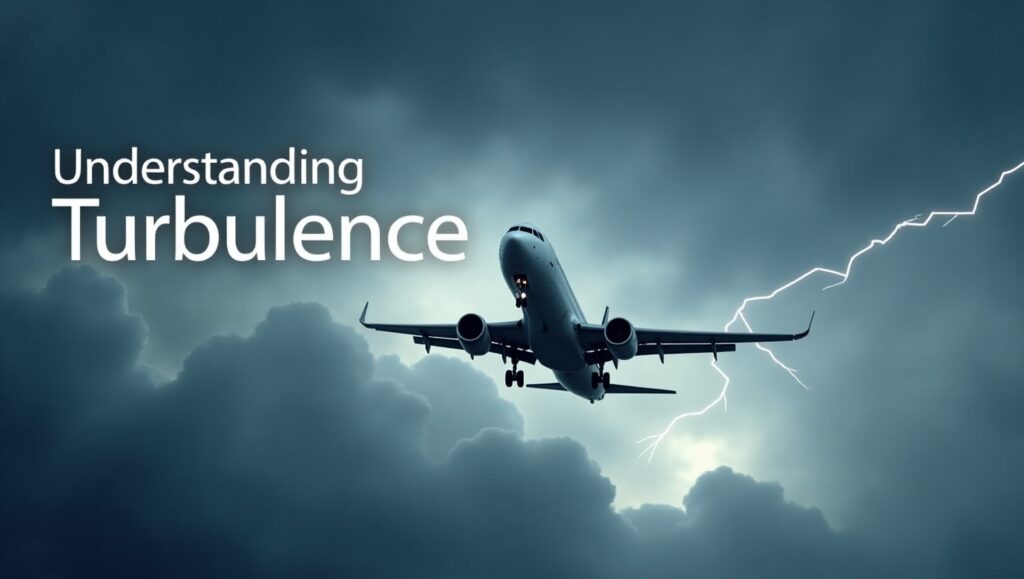As you settle into your seat and fasten your seatbelt for takeoff, you may not be thinking about the occasional bumps that can occur during your flight. However, turbulence—the sudden shaking or movement of an aircraft—can cause some anxiety for passengers. In reality, turbulence is a common and mostly harmless aspect of flying. Understanding the causes, types, and safety measures surrounding turbulence can help you feel more at ease during your journey.
“Turbulence is like driving over a bumpy road,” says Menit KC, co-pilot at Buddha Air. “Modern aircraft are specifically designed to handle turbulence, so there’s no need for concern.”
What Causes Turbulence?
Turbulence occurs when an aircraft passes through irregular air currents, causing sudden movements. Imagine the air as an invisible ocean with currents moving in different directions and speeds. When these air currents meet, they create swirls similar to waves colliding in the sea, causing the aircraft to experience turbulence.
There are several atmospheric factors that can cause turbulence, including changes in air pressure, temperature, or wind speed. Nepal’s mountainous terrain, with its high peaks and deep valleys, contributes to certain types of turbulence. One common example is mountain wave turbulence, which happens when winds are forced to rise over mountain ranges and create wavy air patterns that can jolt an aircraft flying through them.
Types of Turbulence
- Clear Air Turbulence (CAT): This type occurs in clear skies at altitudes above 15,000 feet and is caused by wind shears—sudden changes in wind speed or direction. Since CAT is invisible and can’t be predicted, it can catch passengers by surprise. However, as Menit KC notes, pilots are well-trained to manage CAT, ensuring passenger safety.
- Wake Turbulence: Wake turbulence happens when an aircraft disturbs the airflow around it, leaving behind swirling air currents, especially near the wings and tail. These air swirls can cause mild shaking, similar to the ripples left behind by a boat moving through water. While noticeable, wake turbulence is harmless.
- Mountain Wave Turbulence: In Nepal, the unique geography plays a big role in this type of turbulence. When winds rise over mountains and sink into valleys, they create wavy air patterns that can affect flights. Pilots flying through these areas are specifically trained to handle mountain wave turbulence safely.
- Thunderstorm Turbulence: This turbulence occurs within thunderstorms, particularly during Nepal’s monsoon season. Thunderstorms generate rapid updrafts and downdrafts, creating turbulent conditions. Meteorologists and air traffic controllers closely monitor storms, allowing pilots to adjust flight paths when necessary to avoid areas of severe turbulence.
Staying Safe During Turbulence
Although turbulence can feel unsettling, it is rarely dangerous. Over the years, no accidents in Nepal have been attributed to turbulence, demonstrating the safety of modern aviation. Here are some practical tips to help ensure your comfort and safety during turbulence:
- Always Fasten Your Seatbelt:
Keeping your seatbelt fastened while seated is the easiest and most effective way to stay safe during turbulence. - Listen to the Crew:
Flight attendants are trained to help passengers through turbulent moments. Pay attention to their instructions for guidance. - Secure Loose Items:
Store personal belongings in the overhead bins or under the seat to prevent them from becoming hazards in the event of turbulence. - Stay Calm:
Remember, turbulence is a normal part of flying, and it poses very little risk. Understanding what’s happening can help calm any anxiety.
Pilots and Aircraft: Your Safety Guardians
Modern aircraft, such as Buddha Air’s ATR fleet, are equipped with advanced avionics that help pilots detect and navigate turbulence. These systems, combined with comprehensive pilot training, ensure that turbulence has minimal impact on the flight.
“In the past 30 years, no accidents have occurred due to turbulence,” reassures KC. Pilots are trained to anticipate turbulence, communicate with air traffic control, and make real-time decisions to ensure passenger safety.
Turbulence: A Routine Part of Air Travel
While turbulence might feel uncomfortable, it’s a routine and expected part of air travel. “Understanding turbulence and its minimal risks can help ease your concerns,” says KC. The next time you experience a bump in the air, take a deep breath and trust in the expertise of the flight crew and the safety of modern aircraft.
By staying informed and following safety protocols, you can navigate turbulence with confidence. Whether you’re flying over Nepal’s majestic mountains or cruising through clear skies, rest assured you are in good hands.

